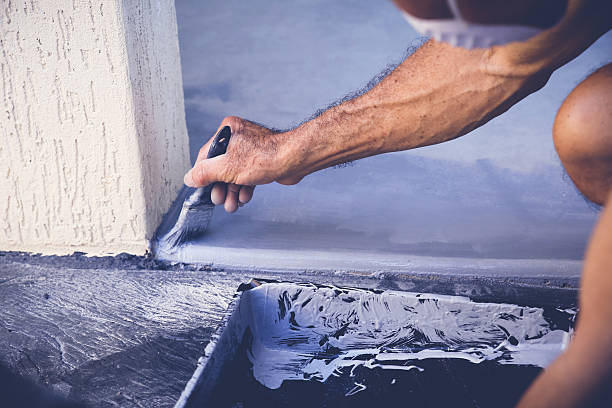Few things have the same dramatic impact as a new coat of paint when it comes to reviving the appearance of commercial facilities. The color and quality of the paint can greatly influence a space’s first impression on customers, staff, and visitors, whether it is a retail establishment, office building, or industrial complex. However, the vital step that occurs before painting—surface preparation—is just as important as the paint itself in producing a polished and long-lasting finish. In this post, we’ll examine the critical role that surface preparation plays in Commercial painting projects and how it may either make or break the outcome.
What Is Surface Preparation?
The process of preparing a surface suitable for painting is called surface preparation. It entails a number of procedures and methods that guarantee the surface is spotless, slick, and suitably prepared for painting. Surface preparation is a crucial component of commercial Painting services since it forms the basis for a successful paint job.
The Significance of Surface Preparation
Durability and Longevity:
One of the most significant advantages of proper surface preparation is the enhanced durability and longevity of the paint job. A well-prepared surface allows the paint to adhere correctly, preventing issues like peeling, cracking, or bubbling. In commercial settings, where high foot traffic and potential wear and tear are common, a durable paint job is essential for the long-term appearance of the space.
Smooth and Professional Finish:
Surface imperfections such as cracks, dents, or uneven textures can show through a coat of paint if not addressed during preparation. Proper surface preparation ensures that the final finish is smooth and professional, creating an inviting and aesthetically pleasing environment for customers and employees.
Cost Savings:
Although extensive surface preparation may appear to be an additional expense, it actually has a long-term financial benefit. Saving time and resources, a well-prepared surface needs fewer applications of paint to produce the required appearance. Moreover, it reduces the need for frequent repainting due to premature paint failure.
Enhanced Adhesion:
Paint adheres best to a clean and properly prepared surface. When surfaces are not adequately prepared, paint may struggle to bond, leading to peeling or flaking. Proper adhesion is vital in commercial settings where the appearance of the space reflects on the business’s professionalism and care.
Prevention of Mold and Mildew:
Due to humidity or food-related factors, the danger of mold and mildew growth is higher in some business settings, such as gyms or restaurants. In order to properly prepare a surface, mold and mildew must be removed and protective coatings must be applied. This is essential to keeping the environment secure and safe.
Surface Preparation Procedures
Depending on the needs of the surface, a number of necessary procedures are involved in proper surface preparation. The procedure’s essential steps are listed below:
Cleaning:
The first step is to clean the surface thoroughly. This involves removing dirt, dust, grease, and any contaminants. Pressure washing, sanding, or chemical cleaning may be necessary, depending on the surface and its condition.
Repairing:
Surface imperfections like cracks, holes, or dents should be repaired. This may involve patching with fillers and sanding to ensure a smooth, even surface.
Priming:
Priming is a critical step in surface preparation. It offers a good foundation for the paint to cling to and has the power to cover any stains or odors. Depending on the surface material and the paint being applied, a different type of primer may be needed.
Sanding:
Sanding the surface ensures that it’s smooth and free of any rough patches or inconsistencies. It also helps the primer and paint adhere properly.
Masking and Taping:
For precise and clean lines, masking and taping off areas that should not be painted is essential. This step is particularly important when working around windows, trim, or other architectural details.
Applying the Paint:
It offers a good foundation for the paint to cling to and has the power to cover any stains or odors. Depending on the surface material and the paint being applied, a different type of primer may be needed.
The Role of Professionals
While some managers or property owners might try to save money by putting off or undervaluing surface preparation, it’s important to understand that this can end up being an expensive mistake down the road. Expert commercial Painting services possess the equipment, expertise, and experience necessary to guarantee the best possible surface preparation. Whether it’s drywall, metal, wood, or concrete, they are aware of the particular needs of each material and can adjust their strategy accordingly.
Experts also have access to superior paints, primers, and materials, guaranteeing a final finish that is both aesthetically pleasing and incredibly durable. Before beginning the painting process, they can also detect and resolve possible problems like mold, water damage, or structural flaws.
Conclusion
The proverb “preparation is key” is applicable to the field of commercial painting services. The process of surface preparation should not be hurried or disregarded. It serves as the cornerstone for an effective and durable paint job. An essential component of any commercial painting project, proper surface preparation offers several advantages, such as increased durability, a smooth finish, cost savings, improved adhesion, and resistance to mold and mildew.
Putting money into expert commercial painting services that place a high priority on meticulous surface preparation is an investment in your business’s overall integrity, longevity, and appearance. It’s an investment that will pay off in the form of a lively, durable, and welcoming space for your clients and workers. Therefore, whether you’re painting an industrial building, a retail store, or an office, keep in mind that a good paint job starts with surface preparation.
The first step towards a redesigned and rejuvenated commercial space is a dedication to surface preparation. It’s a precaution that protects your investment and guarantees that the design and functionality of your area are maximized. Recall that the real beauty of a commercial paint job is found in the invisible work that goes on beneath the surface, in addition to the colors and finishes.




